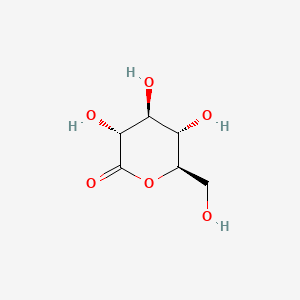号称第二代果酸,加大果酸分子量、缓和刺激性,去角质效果会较迟缓,但增加了保溼力[1]。
亦常用于食品工业作螯合剂,酸化剂等

Part of…
baicapil™ 73800
Technical DataSheet | Supplied by Provital in-cosmetics global 2018
Propanediol, Aqua, Arginine, Lactic Acid, Glycine Soja Germ Extract, Triticum Vulgare Germ Extract, Scutellaria Baicalensis Root Extract, Sodium Benzoate, Gluconolactone and Calcium Gluconate. baicapil™ 73800 by Provital acts as an anti-hair loss, hair growth promoting and revitalizing agent. It is a paraben-free vegetal complex containing extracts of scutellaria baicalensis, soy and wheat sprouts. It contains baicalin as an active molecule. It stimulates hair growth, increases hair density and reduces hair loss. It protects against oxidative damage, activates stem cells, delays senescence, increases cell proliferation and enhances the metabolic activity of the cells. Moreover, it offers younger and healthy looking hair. baicapil™ 73800 finds application in formulating hair care products like tonics, serums, conditioners, masks, shampoos, anti-aging ranges, growth stimulants and anti-hair loss formulas. It has a shelf life of 24 months.
- It’s a polyhydroxy acid (PHA), that is often referred to as next-generation AHA
- It gently lifts off dead skin cells from the skin surface making skin smooth and even
- In the long term, it provides anti-aging benefits, like increased skin thickness and decreased wrinkles (though a tad less than even more proven superstar AHAs)
- It’s a great moisturizer and even helps to repair the impaired skin barrier
- It’s antioxidant and does not make your skin more sensitive to the sun
- It can be used even if your skin is a very sensitive, rosacea-prone or after a cosmetic procedure
The main promise of gluconolactone (and also its brother, the other most often used PHA, lactobionic acid) is that it has comparable awesome skin benefits to AHAs but without the irritation as a side effect.
Glucono Delta Lactone finds use in the cosmetic industry as a moisturizer, pH adjuster, and sequestrant or chelating agent. It is generally considered suitable for all skin types, including sensitive skin, and is non-irritating and antioxidant. The multiple hydroxyl groups on the GdL molecule attract water, resulting in a moisturizing effect when added to skin care formulations. Given their ability to condition and hydrate skin, GdL-containing formulations may even smooth skin texture and reduce the appearance of fine lines and wrinkles.
Glucono Delta Lactone, often abbreviated as GdL, when added into an aqueous solution, rapidly dissolves, and slowly hydrolyzes to gluconic acid, thus producing a gentle acidification in the same way as lactic acid-producing bacteria.
Glucono Delta Lactone, through its slow hydrolysis to gluconic acid, ensures a progressive and continuous decrease of pH to equilibrium. So it is used as a slow release acidifier in formulations. The multiple hydroxyl groups on the GdL molecule that attract water may also act to reduce water availability for microbial growth in cosmetic formulations.
Glucono Delta Lactone is often combined with Sodium Benzoate, a traditional preservative, where it can potentiate the preservative and enhance the microbial tolerance of the finished product. It can also be combined with other antimicrobial or antifungal ingredients whose activity is dependent on a low pH. Glucono Delta Lactone (GdL) can be combined with Potassium Sorbate, Sodium Benzoate, Optiphen, and Optiphen Plus
【Gluconolactone】
Rating: BEST
Benefits: Evens Skin Tone, Anti-Aging, Hydration
Categories: Exfoliant
Gluconolactone is a type of polyhydroxy acid, or PHA. PHAs are supposed to be as effective as AHAs, but less sensitizing.
Gluconolactone is chemically and functionally similar to AHAs (such as glycolic acid). The significant difference between it and AHAs is that gluconolactone has a larger molecular structure, which limits its ability to penetrate the skin, resulting in less potential for sensitizing side-effects. Supposedly, this reduced absorption into the skin does not hamper their effectiveness.
Does that mean gluconolactone is better for your skin than AHAs in the form of glycolic acid or lactic acid? According to an Internet-published class lecture by Dr. Mark G. Rubin, a board-certified dermatologist and assistant clinical professor of dermatology at the University of California, San Diego, research on gluconolactone demonstrated only a “6% decrease in dermal penetration” in comparison to glycolic acid, which “isn’t a dramatic improvement.”
Gluconolactone may be slightly less sensitizing for some skin types, but this isn’t the magic bullet for exfoliation some cosmetics companies have been extolling. Polyhydroxy acids can also function as antioxidants and may promote some amount of improvement in skin’s surface strength.
https://www.paulaschoice.com/ingredient-dictionary/ingredient-gluconolactone.html
